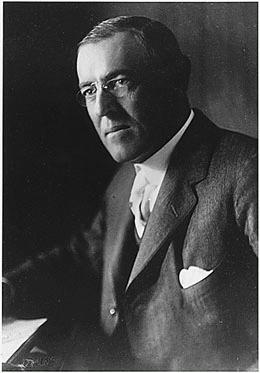On July 11, 1916, President Woodrow Wilson signs the Federal Aid Road Act. The landmark legislation, promoted by the national Good Roads movement, marks the first time that the federal government has provided assistance for state highway costs. The 1916 Act is the forerunner of much more federal highway assistance legislation over the years.
The Good Roads Act
The Federal Aid Road Act was sometimes known as the Good Roads Act, because it was pushed by the Good Roads movement, which lobbied at all levels of government across the country for more and better roads. The Act provided federal funds to match state funds on approved projects. Before a state could qualify for funds, it had to pass an "assenting act" authorizing cooperation with the federal government and make state appropriations for specific highways that would receive federal aid.
The highway department, under Commissioner James Allen, filed Washington's first preliminary project applications in September 1916, in order to preserve the state's rights under the Federal Act. However, it was not until the assenting act and highway appropriations passed by the 1917 Legislature took effect in March 1917 that the first formal applications were submitted.
The federal act provided aid for several different types of roads. Washington was allocated $1,079,141.55, divided over five fiscal years (1917-1921), for "post roads" (significant routes in rural areas). It received an additional allocation of $917,390.00, spread over 10 fiscal years, for "forest roads" to be built within the boundaries of national forests under the supervision of the national forest authorities and the Federal Bureau of Public Roads.
Federal highway aid continued and increased under the 1916 Act and its successors. A quantum jump in federal aid occurred a half century later, when the Federal Aid Highway Act of 1956 provided 90 percent federal funding for a nationwide system of Interstate and Defense Highways.

